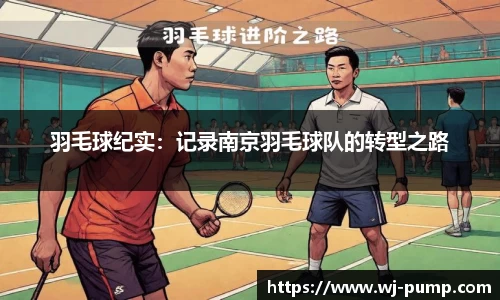羽毛球纪实:记录南京羽毛球队的转型之路
转型背景与历史
南京羽毛球队成立于上世纪80年代,作为江苏省的代表队之一,经历了无数次风雨洗礼。在最初的发展阶段,球队以地方性赛事为主,通过参加全国性比赛逐渐崭露头角。然而,随着时代的发展和体育环境的变化,南京羽毛球队面临着前所未有的挑战与机遇。
进入21世纪后,中国羽毛球运动的整体水平不断提升,各地俱乐部和队伍如雨后春笋般涌现。南京羽毛球队在这样的背景下意识到,仅仅依靠过去的辉煌已无法保障未来的发展。因此,转型成为了必然选择。球队开始重新审视自身定位,以求在新一轮竞争中占据一席之地。
通过对以往成绩的总结和市场需求的洞察,南京羽毛球队决心进行全面改革,从训练体系、管理模式到人才培养等多个方面入手,希望借此实现质变,并不断提升自己的竞技实力和社会影响力。

训练体系创新
为了适应现代羽毛球发展的趋势,南京羽毛球队首先从训练体系入手进行了全方位改造。传统的训练方式已经难以满足高水平运动员对技术、体能及心理素质等多方面要求,因此引入了科学化、系统化的训练理念。团队聘请了多位国内外知名教练,并结合最新科研成果制定个性化训练计划。
此外,球队还建立了完善的数据分析系统,对每一位运动员在日常训练中的表现进行实时监测和评估。这种数据驱动的方法不仅使得教练能够及时调整战术,还能帮助运动员更好地了解自身优缺点,从而加速成长。
与此同时,为了提高运动员的综合素质,南京羽毛球队增加了一系列辅助训练内容,包括心理辅导、营养指导以及恢复训练等。这种多元化的培训模式,使每位队员都能在身心各方面得到全面发展,提高了整体竞技水平。
管理模式改革
Nanjing badminton team’s transformation also involves a comprehensive reform of its management model. In the past, the management structure was relatively单一 and rigid, which limited the team’s flexibility in making decisions and adjustments. To address this issue, the club began to implement a more democratic and participatory management approach.
The new management model emphasizes the importance of teamwork and communication. Regular meetings are held to allow coaches, athletes, and staff to provide feedback on various aspects of training and competition. This collaborative environment fosters innovation and allows for quick responses to challenges that may arise during competitions.
Additionally, the club has introduced professional managers who specialize in different areas such as marketing, sponsorship, and athlete relations. This diversification has helped to alleviate some pressure on coaches while also bringing in new resources for team development. The improved management efficiency not only enhances operational effectiveness but also boosts overall morale within the team.
青少年培养机制
Nanjing badminton team recognizes that sustainable development depends heavily on youth training programs. As part of their transformation journey, they have invested significantly in establishing youth academies across the city. These academies aim to discover and nurture young talent from an early age, ensuring a steady pipeline of skilled players for future competitions.
The youth training programs focus not only on technical skills but also on instilling values such as teamwork, discipline, and perseverance. By providing a holistic educational experience, these programs aim to develop well-rounded athletes who can excel both on and off the court.
This investment in youth development is beginning to pay off as several promising young players have emerged from these academies and made their way into the senior team setup. The integration of young talent into the main squad brings fresh energy while fostering a culture of mentorship led by experienced athletes.
社区参与与推广
The Nanjing badminton team's transformation is not solely focused on internal changes; it actively engages with the local community to promote badminton as a sport. Through various outreach initiatives such as school visits, free coaching clinics, and promotional events in parks and community centers, they aim to raise awareness about badminton among residents.
This community involvement serves multiple purposes: it helps identify potential talent at grassroots levels while also fostering a supportive fan base that can rally behind the team during competitions. Engaging with fans through social media platforms has further strengthened this connection between players and supporters.
The club's efforts have resulted in increased participation rates in local badminton leagues as well as heightened interest from sponsors looking to associate themselves with a vibrant sports culture. Such collaborations will undoubtedly contribute positively towards enhancing resources available for both current athletes and aspiring beginners alike.
总结与展望
Nanjing badminton team's transformation journey reflects a proactive response to changing sports landscapes marked by increasing competition at both national and international levels. By focusing on innovative training methods, improving management practices, nurturing young talents through academies, engaging local communities effectively – each facet plays an essential role in shaping its future success trajectory.
The road ahead promises exciting challenges; however if sustained commitment persists alongside adaptability principles guiding decision-making processes - then prospects shine brightly for achieving even greater heights within competitive arenas while simultaneously enriching lives throughout surrounding neighborhoods united by love for this dynamic sport!